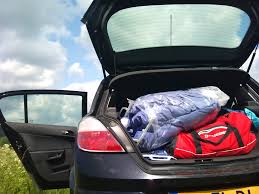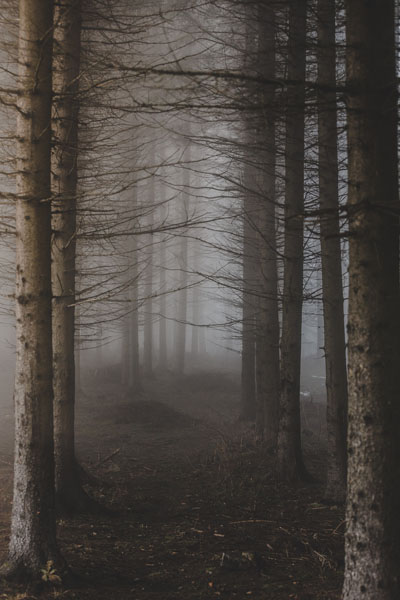TENSES
When writing a story, there are two tense options; PRESENT TENSE and PAST TENSE.
The majority of novels are written in past tense – as in, the action is being recounted after the event. This is a ‘comfortable’ tense to both read and write.
A novel written in Present Tense is happening RIGHT NOW and has a number of pros and cons, which should be considered when using it.
Past Tense example:

The car smelled fusty from the camping gear. I did up my seatbelt and took a deep breath, “This is it, freedom,” I told myself.
A week away, no kids, no work and no commitments. I did a final check; tent, sleeping bag, food…
The kids looked glum, but I was sure they would survive their week with Grandma. Slowly, trying not to seem too eager, I put the car into gear and drove away.
Present Tense example (using the same scene):
The car smells slightly damp, I think the camping gear must be a bit fusty – oh well. I click my seatbelt shut and take a deep breath.
“This is it, freedom,” I tell myself.
I do a final check; tent, sleeping bag, food…wave goodbye to mum and the kids, trying not to acknowledge Lauren and Toby’s glum faces. They’ll survive a week with Grandma…
I jam the car into gear and try not to look too eager as I pull away.
Consider carefully whether present tense is the best choice for your story:
Positive aspects
- Present tense can feel like a movie
- Present tense intensifies your connection with character’s emotions
- Present tense works best in short-time-frame stories with constant action
Negative aspects
- Some readers positively HATE present tense
- Present tense is less flexible because time shifts can be awkward
- Present tense is tricky to write well and easy to get wrong
- There is less narration and often, lots of dialogue.

Future tense is a ‘thing’, but difficult to keep up for any writing of length.
Here’s an example of Future Tense (using the same scene as above):
The car will smell damp from the fusty camping gear. I will have to check I have all my equipment; the tent, sleeping bag, food…
I shall acknowledge my freedom and try not to be affected by the glum faces of my children, who will have a great time with grandma.
Then I will drive off slowly, so as not to seem too excited to be free of them for the week.
Past Tense exercise

Using past tense, write a description of a journey that you have already taken.
Use past tense verbs, for example; did, had, ran, saw, watched.
Present Tense exercise
Using present tense, write a description of that same journey, as if you are actually taking it now.
Be very careful to make sure all your verbs are in the present tense – for example; do, have, run, see, watch.
Present Tense exercise 2
Using present tense, write a short story about a character who has just discovered a hidden cave, whilst on a beach in Cornwall.
How do they discover the cave and what is inside it? Don’t forget to describe any smells, sounds or feelings your character experiences.
AND IF YOU REALLY HATE PRESENT TENSE.
Do the same exercise using Past tense – it’s absolutely fine. Focus on describing how your character feels and what they observe.

WRITING PACE
Think about the pace of action in movies. It often moves slowly in a love story, frantically in a thriller, jumps about in a comedy and can be staccato in a horror. You can replicate the same ‘feeling of pace’ with your writing, by changing the lengths of your sentences and therefore the speed and smoothness of your delivery.
Short sentences

- Short sentences can signify that something may be about to happen and can create the necessary tension leading up the ‘happening’.
The night was clear. She could see the road ahead. Nothing to worry about. Nothing at all.
- A series of super-short sentences can draw the reader’s attention to details of significance.
“She meandered down along Oxford Street. Long hair bouncing, non-descript yoga-pants and well-used gym bag. The only detail giving away her status was her watch. Patek Philippe. Calatrava. Alligator strap. Rose gold case. About eighteen thousand pounds.”
In the above example, short sentences are used to depict the features of a particular detail; the expensive watch. The writer has drawn our attention to it for a reason.
- Short, sharp sentences are great for action scenes where there is lots going on simultaneously. You want to provide the reader with ‘glimpses’ of every bit of action in a ‘gun-fire’ manner.
Jack led them in. Guns fire incessantly. All exits blocked. Troops surrounded them. More explosions. Blood. Pitiful cries. No hope
Long sentences

- Long sentences are used to develop a slow-burning build-up of tension, unlike short sentence, which bring immediate tension.
- For ‘painting’ vivid descriptions that draw the reader in, particularly depicting nature, or romantic scenes.
From some points of view, long sentences have become ‘old fashioned’ and boring – this may well be true in many teen/YA novels and ‘chic lit’. I believe this stems from our modern, time-starved, social media-driven lives, in which we only ever read ‘snippets’ of information and many people have lost the will and ability to hold their attention on longer pieces of writing (indeed there is an app that will condense a book into a mere fifteen minutes of key points).
This does not mean you shouldn’t use beautifully constructed, long sentences BUT, that you should have an awareness of the modern reader and the market you are aiming your writing at.
Vary your sentence length
Imagine your reader is floating down a river – sometimes they are meandering through beautiful scenery and having a lovely relaxing time, then occasionally, they drop into a death-defying rapid, or slide into a patch of choppy water. If you really want to wake your reader up, you can suddenly throw them down a waterfall – metaphorically speaking, of course.
Pace exercise 1
Your character is being chased through a woodland by a man she does not know, write two different versions of the same scene:
- First person PoV (I, me, we), short punchy sentences
- Third person PoV (she, he, they), with longer, descriptive sentences
Read each scene back, or ask a friend to read them for you. How does the sentence length and PoV affect the scene?

Pace exercise 2

Write a short scene where a main character is waiting to meet someone.
Are they nervous, excited, fearful or angry? Use sentence length to show the feelings of your character in anticipation of this meeting but, don’t tell the reader who they are meeting with – the descriptions should give an indication.
For example – short sentences:
She waited. Walked on the spot to warm her feet. He should be here. He promised he would. Wished she had said no. Footsteps. Too late, he was coming. Heart-beat quickened. Too late to leave now.
For example – long sentences:
She watched patiently, as swathes of commuters, coffee in hand, rushed and brushed past her. It had been nearly thirty-minutes and she was on the verge of leaving, but the thought of seeing him one more time, if only to answer her questions, had kept her glued to the rendezvous point. She caught her breath as she heard a familiar footfall, distinctly audible above the crowd, steadily approaching from behind.
I would love to see what you do with the exercises, please do feel free to post them in the comments below.
